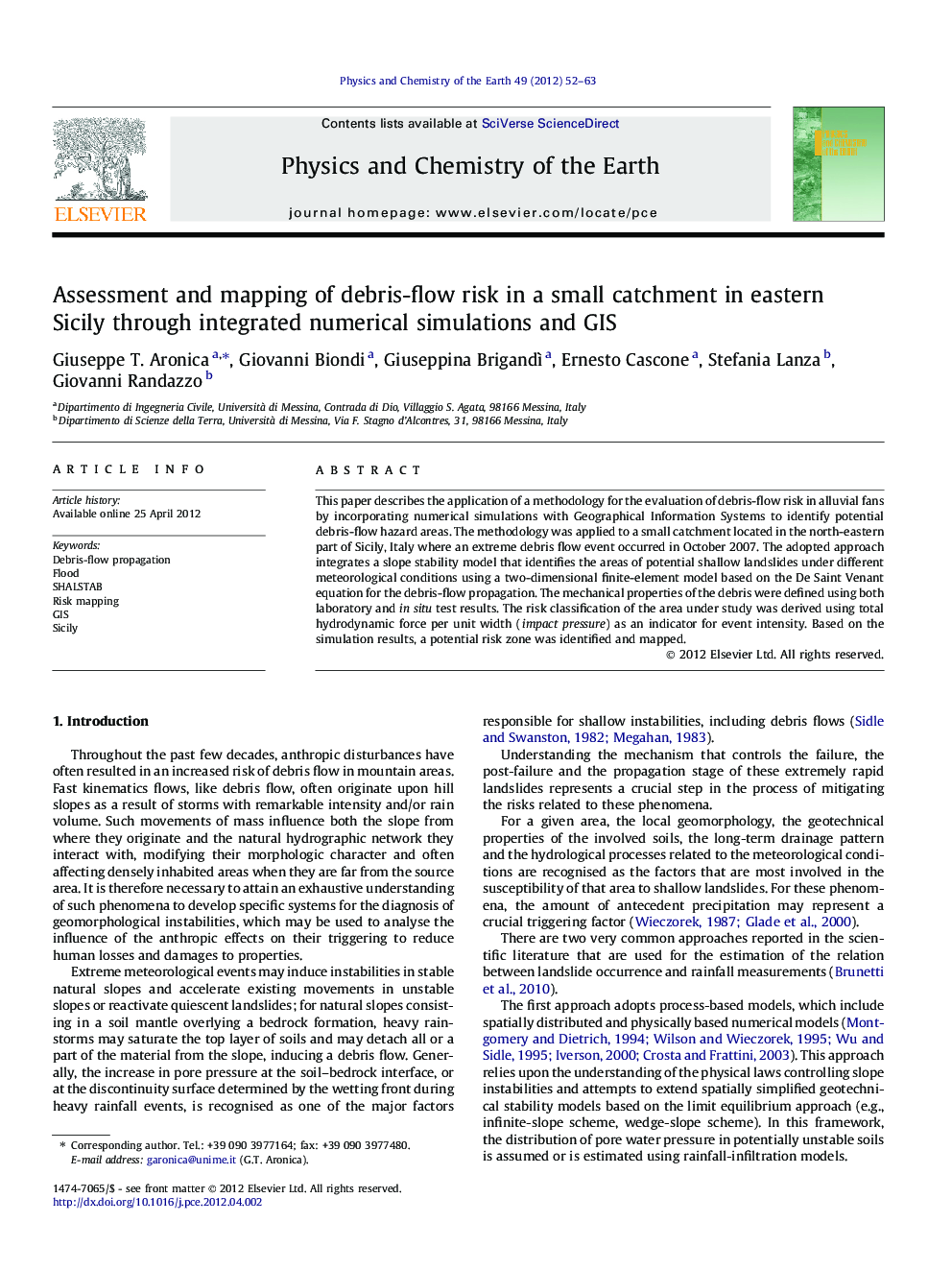| Article ID | Journal | Published Year | Pages | File Type |
|---|---|---|---|---|
| 4721158 | Physics and Chemistry of the Earth, Parts A/B/C | 2012 | 12 Pages |
This paper describes the application of a methodology for the evaluation of debris-flow risk in alluvial fans by incorporating numerical simulations with Geographical Information Systems to identify potential debris-flow hazard areas. The methodology was applied to a small catchment located in the north-eastern part of Sicily, Italy where an extreme debris flow event occurred in October 2007. The adopted approach integrates a slope stability model that identifies the areas of potential shallow landslides under different meteorological conditions using a two-dimensional finite-element model based on the De Saint Venant equation for the debris-flow propagation. The mechanical properties of the debris were defined using both laboratory and in situ test results. The risk classification of the area under study was derived using total hydrodynamic force per unit width (impact pressure) as an indicator for event intensity. Based on the simulation results, a potential risk zone was identified and mapped.
► This article describes an integrated methodology to map debris-flow risk. ► Methodology integrates a slope stability model with a 2D debris-flow routing model. ► A GIS interface allowed to derive hazard and risk maps. ► The methodology was tested in the Mastroguglielmo catchment, Sicily, Italy.
